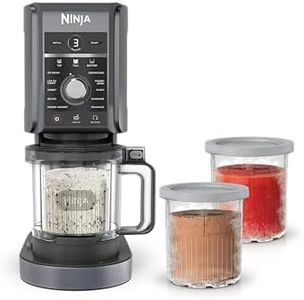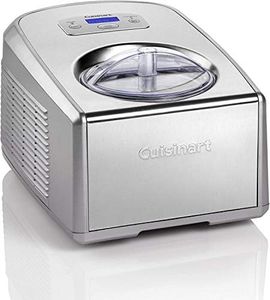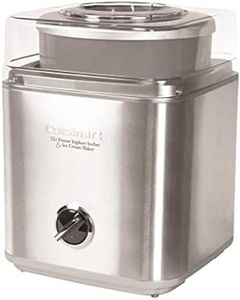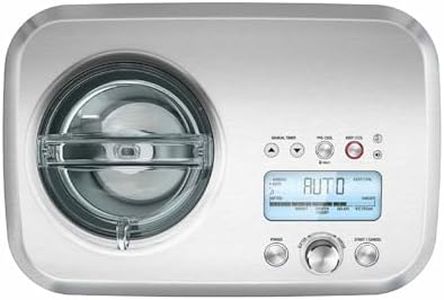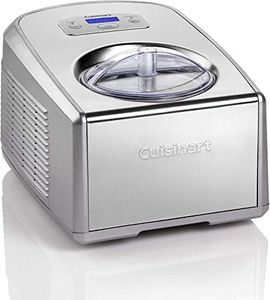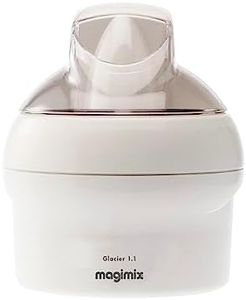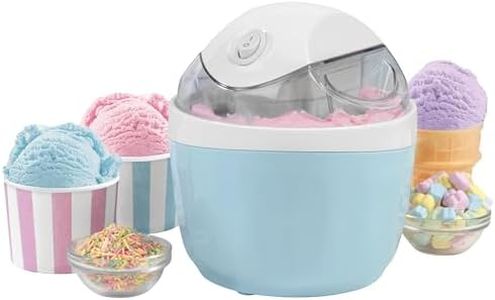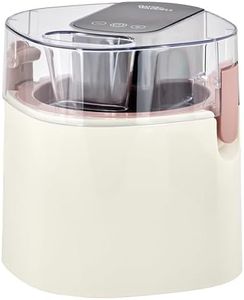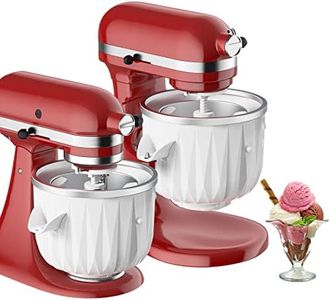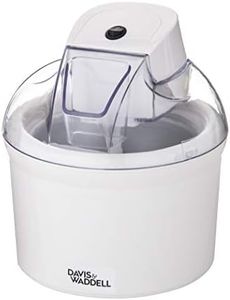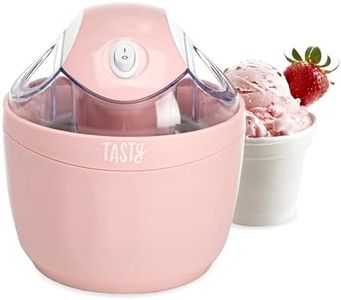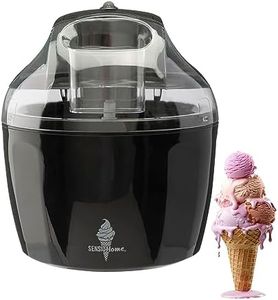We Use CookiesWe use cookies to enhance the security, performance,
functionality and for analytical and promotional activities. By continuing to browse this site you
are agreeing to our privacy policy
10 Best Electric Ice Cream Makers
From leading brands and best sellers available on the web.Buying Guide for the Best Electric Ice Cream Makers
Choosing the right electric ice cream maker is about balancing ease of use, performance, and the kind of frozen treats you want to create. With a wide variety of models on the market, it's important to understand what features matter most, so you can enjoy homemade ice cream that meets your taste, portion sizes, and lifestyle. Thinking about how often you'll use it, the space you have available, and the types of desserts you want to make will help you zero in on the best option.CapacityCapacity refers to how much ice cream the maker can produce in one batch, usually measured in quarts or liters. This is important because it determines whether you can make enough for just yourself, your family, or a larger group in one go. Small capacity (about 1 quart or less) is ideal for singles or couples who want to make small amounts and experiment with recipes. Medium capacity (1.5 to 2 quarts) suits families or those who like having dessert for a few days. Large capacity (2 quarts and above) is best for parties or regular entertaining. Think about your typical serving needs: if you rarely make big batches, a smaller machine saves space and cleaning effort; if you entertain often, go larger.
Freezing MechanismThis refers to how the ice cream is chilled during the mixing process, and it's crucial because it affects both convenience and outcome. There are generally two types: models with a built-in compressor and those with a removable bowl that has to be pre-frozen. Compressor models cool themselves and allow you to make batch after batch without waiting, which is good for dedicated ice cream fans or spontaneous making. Pre-freeze bowl models are lighter and cost less, but you need to plan ahead as the bowl needs to freeze for several hours. If you want flexibility and speed, a compressor model is worth considering; if kitchen space and simplicity matter more, a pre-freeze bowl will do fine.
Churn TimeChurn time is the amount of time it takes to turn your mixture into ice cream, usually ranging from 15 minutes up to an hour. Shorter churn times are convenient when you want quick results or plan to make several batches. Faster models often have more powerful motors or effective freezing systems. If you tend to decide on a whim to make dessert, or if you have impatient kids, a model with a shorter churn time will be more satisfying. If you don't mind waiting a bit or prefer richer, denser ice cream, a longer churn time isn't a problem.
Ease of CleaningEase of cleaning covers how simple it is to take apart and wash the parts that come into contact with ice cream. This is important if you plan to use your maker frequently or dislike chores. Machines with few, dishwasher-safe components save time and effort, and reduce the chances of leftover residue affecting flavors. Look for smooth, simple shapes and fewer small crevices, which trap ingredients and make cleaning harder. If you want low-maintenance enjoyment, prioritize models known for easy cleaning.
Size and StorageThe physical size of the ice cream maker matters because it affects where it will fit in your kitchen and how easy it is to store when not in use. Compact models fit well in small kitchens or if you have limited counter space. Larger units need more room, especially compressor types, which are heavier and bulkier. Before buying, consider where the maker will live: if space is at a premium, opt for a more compact design; if it's a countertop staple, size may matter less.
Noise LevelNoise level is how loud the machine is during operation, which can be an issue in open-plan living spaces or for those sensitive to sound. Some ice cream makers are known for being particularly loud, particularly more powerful ones, which can be disruptive, while quieter models can work unobtrusively in the background. If you have a quiet household or make ice cream while others are sleeping or working, look for a model that emphasizes quiet performance.
